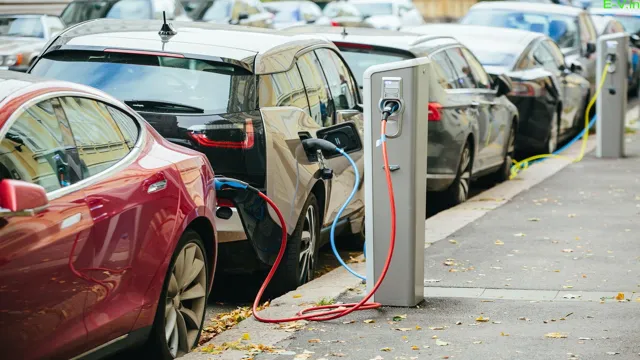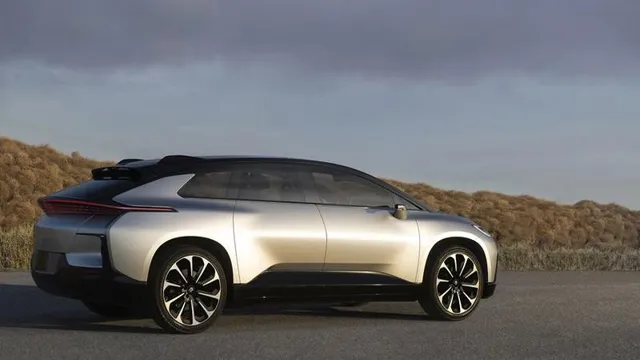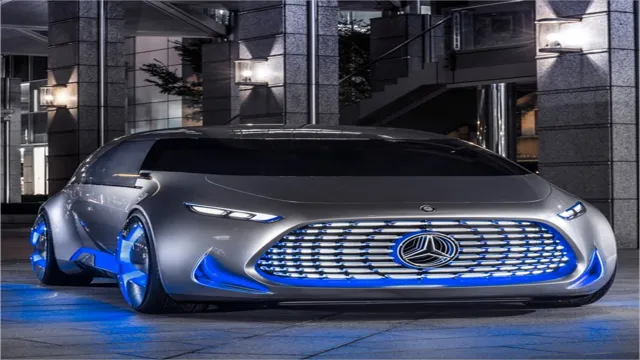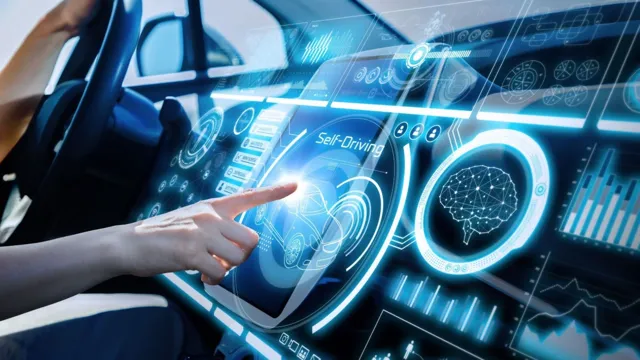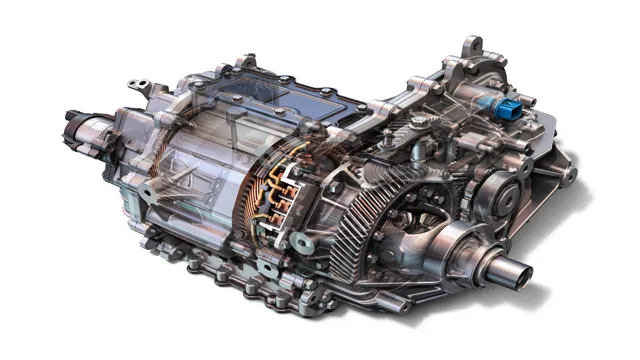Revolutionizing the Road: The Technological Advances Making Electric Cars a Reality
Electric Vehicles (EVs) have come a long way since the first electric car was developed in the 1830s. However, it wasn’t until recently that EVs have started to become more popular with the introduction of new technology and environmental awareness. The evolution of EV tech has allowed for an increase in range and battery life, as well as better charging options and increased performance.
In this blog, we will explore the various stages of EV tech development and how it has helped shape the future of transportation. So sit back, buckle up, and let’s take a ride through the history of EV technology.
Battery advancements
Technological advancements in battery technology have made electric cars more realistic for everyday drivers. The advancements in Lithium-ion batteries have extended the range of electric vehicles, making it possible to go further on a single charge than ever before. The development of fast-charging stations has also made it more convenient for drivers to recharge their electric cars on-the-go.
Moreover, the use of regenerative braking systems enables electric cars to recharge their batteries while driving, increasing the overall efficiency of the vehicle. Additionally, hybrid electric cars have also become more popular among drivers who want to switch to electric but do not want to lose the convenience of a traditional gas-powered car. As battery technology continues to advance, it is likely that electric cars will become even more practical and affordable for the masses.
More energy-dense batteries, longer range
Battery advancements mean that electric vehicles are becoming more practical and feasible options for commuters who prefer a green, eco-friendly alternative to traditional cars. More energy-dense batteries with longer ranges are being developed, which means that EVs can go further on a single charge than ever before. This not only helps with daily commutes, but it also means that EVs can handle longer trips without needing to be frequently recharged.
These advancements have also led to smaller, more compact battery packs, allowing for more interior space in the cars themselves. With the electrification of transportation becoming a reality, the automotive industry will continue to invest in battery research and development to improve the technology and make it more affordable and accessible to the masses.
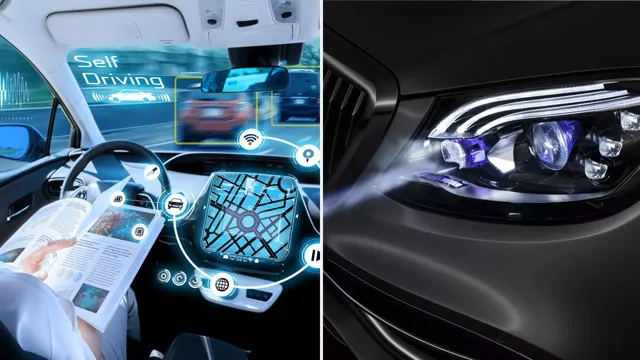
Faster charging time
Battery advancements have led to faster charging times, making it easier for people to stay connected and on the go. One of the most exciting developments is the use of high-density lithium-ion batteries, which have a greater capacity and can be charged at a faster rate than traditional batteries. This means that devices such as smartphones and laptops can be fully charged in a fraction of the time it used to take.
In addition, manufacturers are using new materials and designs for batteries that allow for more efficient charging and longer-lasting performance. These advancements are changing the way we live our daily lives, making it easier to stay productive and connected no matter where we are. As more people rely on technology to keep up with the fast-paced world, faster charging times have become a must-have feature for devices of all kinds.
With these advancements, we can expect even more convenience and efficiency in the years to come.
Improvements in powertrain
Over the past decade, significant improvements in powertrain technology have made electric cars more realistic for everyday drivers. One key advance has been in the development of high-capacity, long-lasting batteries that enable electric cars to travel further on a single charge. The engineering advancements in charging infrastructure and regenerative braking systems also contribute to the momentum of electric cars.
The software and computing technologies that facilitate the vehicles’ energy management systems allow the car to determine how much energy it needs to use to get to its destination while maintaining the charge for as long as possible. Also, continuous advancements in electric motor technology, such as the use of high-efficiency permanent magnets, have made electric cars more efficient and affordable. Overall, these technological breakthroughs have made electric cars a reliable and increasingly practical transportation option and helped to alleviate drivers’ concerns about range anxiety caused by previous electric cars’ limited driving range.
Improved efficiency and power output of motors
Improvements in powertrain have led to increased efficiency and power output of motors. Engineers have been working tirelessly to optimize powertrain systems, from the engine to the drivetrain, in order to make them more efficient and powerful. One key area of focus has been in reducing the weight of components, such as engine blocks and transmission casings, without sacrificing structural integrity or durability.
This has been achieved through the use of advanced lightweight materials such as aluminum, magnesium, and carbon fiber. In addition to reducing weight, engineers have been improving the efficiency of power delivery, with the use of advanced fuel injection systems, turbocharging and hybrid powertrains. These improvements have led to significant reductions in emissions, as well as improved fuel economy.
With these advances in powertrain technology, we can expect to see even more powerful and efficient motors in the future.
Better integration of power electronics
Improvements in powertrain are bringing about better integration of power electronics. These advancements are largely due to the electrification of vehicles, which requires the use of power electronics to manage the flow of energy between the battery, motor, and other components. The integration of power electronics into the powertrain can lead to improved efficiency, reduced emissions, and increased performance.
One example of this is the use of inverters, which convert DC power from the battery into AC power for the motor. By integrating the inverter into the motor, manufacturers can reduce the amount of wiring and components needed, resulting in a more compact and efficient system. Additionally, advancements in power electronics have led to improvements in regenerative braking systems, which can capture energy from braking and store it in the battery for later use.
These improvements in powertrain technology are helping to make electric and hybrid vehicles more practical and attractive to consumers, and are paving the way for a more sustainable transportation future.
Development of charging infrastructure
The widespread adoption of electric vehicles has been hindered by the lack of a comprehensive charging infrastructure. However, the development of charging infrastructure has come a long way, making electric cars more realistic and practical for consumers. Technological advancements such as fast charging, wireless charging, and portable chargers have made it easier for drivers to charge their cars on the go.
Using fast chargers, drivers can charge their cars up to 80% in just under 30 minutes. Wireless charging, on the other hand, allows drivers to charge their cars simply by parking on a charging pad, eliminating the need for cables. Portable chargers that can fit in a glove box or trunk have also become popular, allowing drivers to charge their cars even when they’re not near a charging station.
In addition to these technological advances, there has been a significant increase in the number of public charging stations, making it easier for drivers to charge their cars when they’re away from home. These developments have made electric cars more practical and reliable, paving the way for a future where electric cars will be the norm rather than the exception.
Increased access to public charging stations
One of the key concerns with owning an electric vehicle is access to charging stations. However, this challenge is gradually becoming a thing of the past as the development of charging infrastructure has received increased attention. The focus is on creating public charging stations across the nation, which is a necessary requirement for the widespread adoption of EVs.
Today, there are more public charging stations compared to a few years back, making it easier for EV owners to charge their vehicles when they travel. Moreover, private companies are partnering with cities to build EV charging stations, which are often located in high traffic areas such as shopping malls, gas stations, and airports. These locations offer EV owners the convenience to charge their cars while going about their daily lives.
As the infrastructure for public EV charging grows, the transition to electric vehicles becomes more practical and affordable for everyone.
Home charging options
The development of charging infrastructure has been a key factor in the widespread adoption of electric vehicles. The advancements in technology have paved the way for more efficient and convenient home charging options. Electric car owners can now choose from a range of charging solutions that fit their lifestyles, budgets, and vehicle types.
Level 1 charging stations, which use a standard 120-volt outlet, are the easiest and most affordable option. However, Level 2 charging stations, which require a 240-volt outlet, provide faster charging times and are ideal for daily use. These home charging options allow drivers to recharge their vehicles overnight, ensuring that they start each day with a full battery.
The convenience of home charging also means that electric car owners can avoid the hassle of waiting in long lines at public charging stations or constantly worrying about running out of battery power. As the electric vehicle market continues to grow, so too will the development of new and innovative charging solutions, providing even more options for drivers to power up their EVs at home.
Advancements in autonomous driving technology
Electric cars have come a long way, and one of the key reasons is the technological advances in autonomous driving. With features such as lane assist, automatic braking, adaptive cruise control, and self-parking becoming increasingly common, electric vehicles have become more efficient, safe, and user-friendly. One of the most significant advancements is the development of autonomous driving technology, which allows electric cars to drive themselves without the need for human intervention.
This technology is constantly evolving and becoming more sophisticated, thanks to advances in sensors, cameras, and software. With autonomous driving, electric cars can navigate through traffic more efficiently, optimize energy consumption, and reduce the risk of accidents. As a result, these vehicles have become a more realistic option for consumers looking for a sustainable and low-emission transportation solution.
Sensors for obstacle detection and collision avoidance
With the advent of autonomous driving, the need for obstacle detection and collision avoidance sensors has become increasingly important. These sensors work by using various technologies such as radar, lidar, and cameras, to detect and analyze the surrounding environment in real-time. As cars become fully automated, they will require a more comprehensive system to avoid hazards on the road and ensure safety for occupants and pedestrians alike.
Advances in sensor technology have made significant strides in recent years, allowing for better accuracy and reliability when it comes to detecting potential obstacles. These systems can detect a range of objects from other vehicles to pedestrians, and can even detect and track moving objects. With the continued development and integration of sensors with autonomous driving technology, the future is bright for the safer, more efficient, and more reliable driving experience.
Artificial intelligence for route planning and energy management
As technology continues to advance, we are witnessing remarkable progress in the field of autonomous driving. One area of focus is the use of artificial intelligence (AI) for route planning and energy management. This technology uses machine learning algorithms to analyze data such as traffic patterns, weather conditions, and driver behavior to determine the most efficient route and optimize energy consumption.
With AI, we can expect to see significant improvements in fuel efficiency, reduced emissions, and enhanced safety on the roads. The burstiness of data in transportation infrastructure requires advanced computational power to analyze and predict patterns, and AI is paving the way for futuristic developments in the field. Imagine a world where vehicles communicate with each other to avoid accidents, plan routes around traffic, and manage energy consumption in real-time.
It might seem like science fiction, but advancements in autonomous driving are bringing us closer to this reality every day.
Conclusion
In conclusion, the once elusive dream of electric cars has become a tangible reality thanks to a series of technological breakthroughs. The development of advanced batteries, more efficient charging stations, and smarter software systems have all played a critical role in making these vehicles more practical and accessible for everyday use. With each new innovation, electric cars have become more realistic and are poised to play a pivotal role in the future of transportation.
So if you’re thinking of making the switch, now is the perfect time to jump on board the electric revolution and experience the thrill of emission-free driving.”
FAQs
What advancements in battery technology have allowed electric cars to travel longer distances?
Lithium-ion batteries have greatly improved the range of electric vehicles, allowing them to travel up to 300 miles on a single charge.
How have charging networks expanded to accommodate electric cars?
More public charging stations and home charging stations have been installed, with some allowing for faster charging times, making electric cars more practical for longer trips.
What has been the impact of increased government incentives on the adoption of electric cars?
Government incentives, such as tax rebates and subsidies, have made electric cars more affordable and attractive to consumers, leading to increased adoption rates.
How has improved aerodynamics and lightweight materials contributed to the efficiency of electric cars?
Streamlined designs and lightweight materials, such as carbon fiber, have reduced drag and weight, improving the efficiency and range of electric cars.
